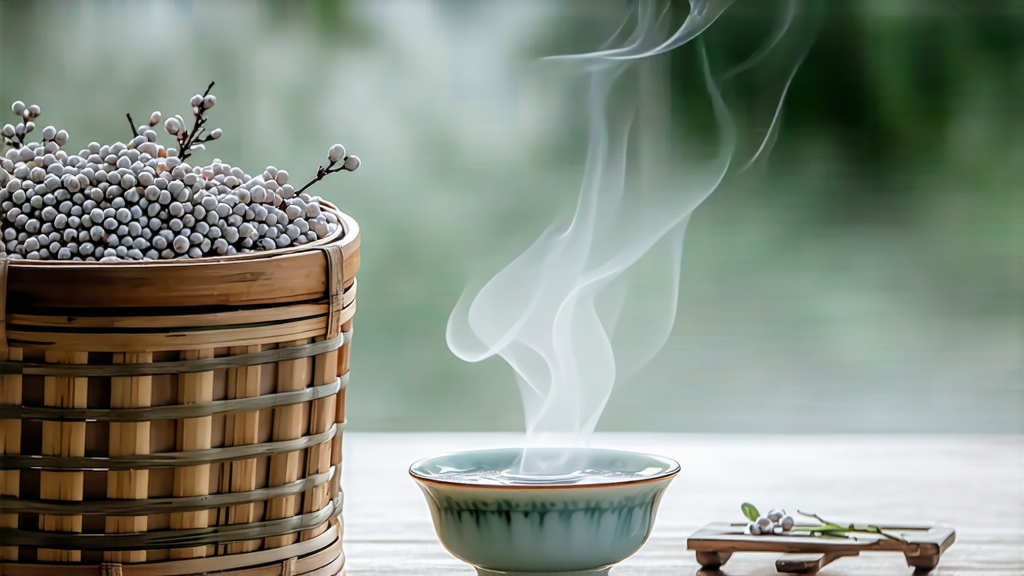
Tucked into the northeastern corner of Fujian province, where the Wuyi Mountains exhale cool, mineral-rich air toward the East China Sea, lies the ancestral home of the world’s most delicate white tea—Silver Needle, or Bai Hao Yin Zhen. To the uninitiated it looks almost too simple: a handful of ivory-colored buds, downy as a moth’s wing, with no twist, no roast, no dramatic hue. Yet in those unopened leaf tips lies a story that begins during the Song dynasty, winds through imperial tribute caravans, survives the collapse of the Qing, and is now re-emerging in third-wave cafés from Brooklyn to Berlin. Understanding Silver Needle is less about mastering technique than about unlearning the urge to control; it is tea that asks for stillness, and rewards it with layers of aroma that recall mountain orchards after rain.
Historical whispers
The first written record of “white tea” appears in 1064 CE in Song emperor Huizong’s Treatise on Tea, where he praises its “jade white” color and “cooling nature.” At that time the term referred to any tea whose leaf was so tender that the down remained visible after processing, not to a distinct category. True Silver Needle materialized later, when 18th-century tea makers in Fuding noticed that the unusually large, down-covered buds of the newly domesticated Da Bai (Big White) cultivar could be air-dried without any pan-firing, yielding a liquor so pale it looked like infused moonlight. By 1796 the buds were being presented to the imperial court in small bamboo-lined boxes sealed with rice paper; the court physicians valued it for clearing inner heat, especially after nights of sake-laden banquets. When the Treaty of Nanjing opened Fuzhou as a treaty port in 1842, European merchants carried the novelty to London, where it fetched prices higher than first-flush Darjeeling and was christened “Silver Tip Pekoe” by the East India Company. The 20th century’s wars and revolution scattered the gardens; many Da Bai bushes were grafted over to hardier oolong varieties. Only in the early 1980s did provincial agronomists re-graft old groves, clone elite mother trees, and re-establish the pure-bud standard that defines modern Silver Needle.
Terroir and cultivar
Authentic Silver Needle comes from two counties: Fuding and Zhenghe, each offering a subtly different personality. Fuding sits on a granite bedrock; its sandy, slightly acidic soils drain quickly, forcing the roots to dive deep for minerals. The resulting buds are plumper, their amino-acid profile tilted toward the sweet compound L-theanine. Zhenghe, higher in elevation and shrouded in lingering cloud, produces buds that are slimmer yet more aromatic, rich in volatile floral terpenes. Both areas rely on the Da Bai cultivar, identifiable by its oversized bud—often 2.5 to 3 centimeters long—wrapped in a silvery pubescence so dense it feels like powdered snow. Garden managers prune the bushes into wide umbrellas that maximize airflow, discouraging fungal disease in the humid spring. No chemical pesticide is applied after early March; instead, growers plant aromatic citronella grass between rows to confuse leaf-hopping insects, a practice now certified under China’s organic “Green Food” standard.
Plucking ritual
The harvest window opens around 15 March and closes before Qingming festival (4 or 5 April), when the buds are still closed “like sparrow’s tongues,” as local pickers say. Each dawn, crews of women move uphill in single file, wearing wide bamboo hats and cotton gloves to avoid marking the buds with skin oils. A practiced hand can pluck 2,000 buds per hour, yet only 30 kg will be gathered by sunset—barely enough to produce 5 kg of finished tea. The buds drop into wicker baskets lined with fresh banana leaves, preventing mechanical bruising. Back at the farmhouse, the contents are poured onto sieves and inspected under natural light; any leaf whose tip has unfurled even a millimeter is rejected, ensuring the enzymatic purity that gives Silver Needle its signature clarity.
Withering: the invisible craft
Unlike green tea that is fixed by heat, white tea is defined by what is not done. The buds are spread one layer deep on bamboo trays stacked like drawers in open-walled barns.